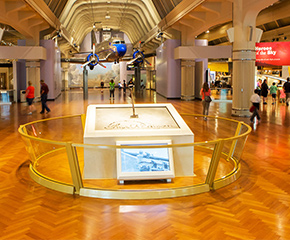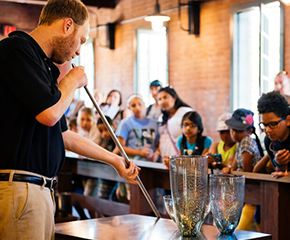
A Unique
Educational Vision
"Learning to Do by Doing"
Early on, Henry Ford’s vision for his Museum and Village was to provide hands-on learning opportunities for students. His philosophy of education was “learn to do by doing.” He believed that “by looking at the things that people used and how they lived, a better and truer impression can be gained than could be had in a month of reading.” It was a way of learning that Ford had experienced during his own childhood, and the way, in fact, that he himself learned best. In Henry Ford’s Edison Institute schools, students would learn not only from books, but also from objects and hands-on experiences.

Henry Ford’s School
In September 1929, Henry Ford’s Edison Institute school system began at Scotch Settlement School in Greenfield Village, with 32 grade school children. Students were taught using both traditional and progressive methods. Standard academic subjects like reading, arithmetic, geography, and science were at the core of their studies. Pupils also used the artifacts and many of the historic buildings in the village for practical learning. Girls learned housekeeping skills while boys got experience operating machinery. Only when visitors pressed for regular access was the Village formally opened to the public. Ford made it clear that, despite the presence of paying guests, there was no place off-limits to the schoolchildren.

Education Through Experience
As the original students grew older, grades and buildings were added to accommodate them and other students who attended the school. A high school with classrooms in the Museum was added in 1934, with the first graduating class in 1937. The Edison Institute of Technology—a work-study engineering college—was added in 1937, with classes and labs in the Recreation Building (later called Lovett Hall). Many historic buildings in Greenfield Village accommodated full-time student activities. It was “education through experience” everywhere.
At its peak in 1940, 300 students were enrolled in the Edison Institute Schools. This school system also came to include rural schools in other parts of Michigan and other regions of the United States as well as in England and Brazil.



